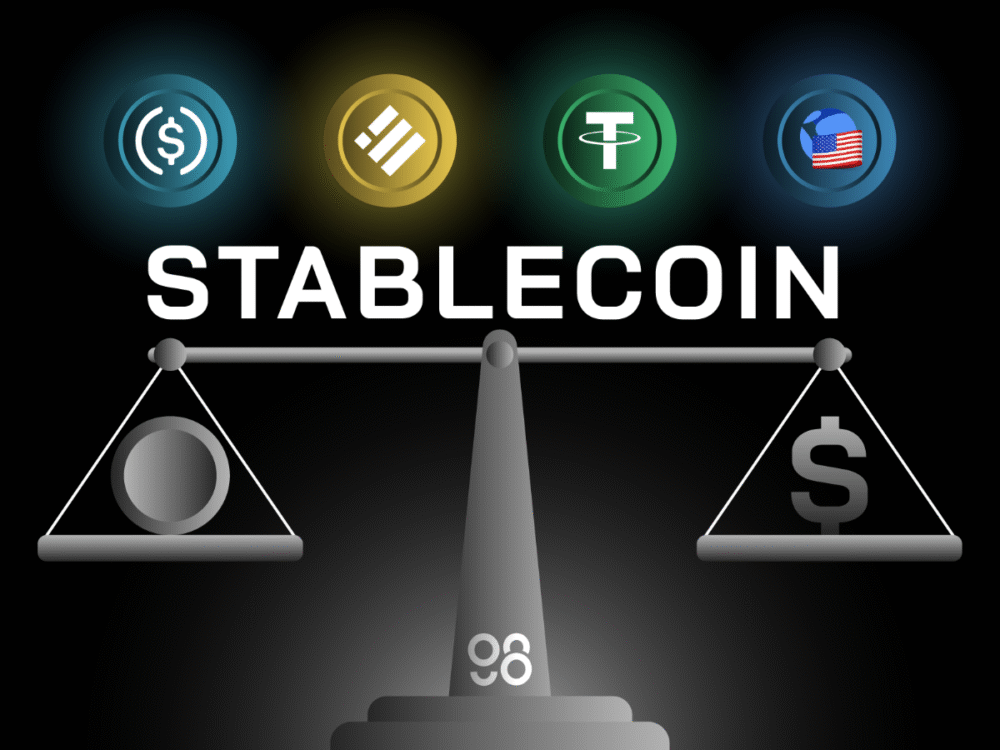If you’ve just dipped your toes into the world of crypto, you’ve probably heard the term “stablecoin” being thrown around. But what exactly is it? Is it safe? Can you really trust something in crypto that claims to be stable?
Take a deep breath. You’re in the right place.
In this friendly guide, we’ll walk you through the basics:
- What stablecoins are
- How they work
- Why they’re important in the crypto space
- Whether they’re actually safe to use
- And yes. Whether you can lose money with them
What Is a Stablecoin in Crypto?

A stablecoin is a type of cryptocurrency designed to maintain a steady value, usually pegged to a real-world currency like the U.S. dollar. While coins like Bitcoin and Ethereum can swing wildly in price, stablecoins aim to stay close to $1 USD at all times.
Imagine it like digital cash:
- Easy to transfer
- Quick to trade
- And most importantly, reliable in value
Popular stablecoins include USDT (Tether), USDC (USD Coin), and DAI.
So, while the crypto world can feel like a rollercoaster, stablecoins are more like the safety belt that helps you ride it out with confidence.
How Does a Stablecoin Maintain Its Value?
You might be wondering how can something in crypto not change in value? It’s a great question!
There are several models that stablecoins use to stay steady. Let’s break them down:
1. Fiat-Backed Stablecoins (Most Common)
These are backed 1:1 by actual U.S. dollars or cash-equivalent assets, stored safely in regulated banks or money market funds. For every 1 stablecoin issued, there’s $1 in reserve.
Examples: USDT, USDC
These are the most widely used and trusted in the market today.
2. Crypto-Collateralized Stablecoins
These are backed by other cryptocurrencies like Ethereum, but they’re over-collateralized to protect against price volatility. That means you might lock up $150 worth of ETH to mint $100 in stablecoins.
Example: DAI (by MakerDAO)
It’s decentralized and transparent,but still tied to the ups and downs of the crypto market.
3. Gold-Backed Stablecoins

These stablecoins are backed by real, physical gold stored in secure vaults. Each token represents ownership of a fixed amount of gold.
Examples:
- PAXG (Paxos Gold) – 1 token = 1 troy ounce of gold
- XAUT (Tether Gold) – backed by gold reserves in Switzerland
These appeal to those who trust gold more than fiat currency and want long-term, inflation-resistant value.
4. Algorithmic Stablecoins
These don’t use any physical reserves. Instead, they use smart contracts and supply mechanics to try and hold the price around $1. If demand rises, they mint more coins. If the price drops, they burn tokens.
Example: TerraUSD (UST) which unfortunately collapsed in 2022
Lesson: while innovative, algorithmic stablecoins are much riskier than other types.
5. Treasury Bill-Backed Stablecoins
Some stablecoins are backed by short-term U.S. Treasury bills, which are considered one of the safest government-backed assets in traditional finance.
Example: USDO
USDO is a stablecoin backed by highly liquid, yield-bearing U.S. Treasury securities. This approach offers transparency, low volatility, and the potential for passive yield—making it attractive for both individual users and institutions.
Backing stablecoins with T-bills provides a balance between stability, transparency, and real-world yield, helping maintain the peg while supporting long-term sustainability.
Why Are Stablecoins Important in Cryptocurrency?

You might be thinking, “Why not just use regular money?” Fair question!
Stablecoins serve as a bridge between crypto and traditional finance. Here’s why they matter:
- Store of Value: You can park your money without worrying about crypto volatility
- Quick Trading: Traders use stablecoins to switch between crypto assets fast
- Global Access: People in countries with weak or unstable currencies can access digital dollars
- DeFi & Payments: Many decentralized apps (DeFi) run on stablecoins for lending, staking, and earning yields
In short, stablecoins are the glue that holds the crypto ecosystem together.
Are Stablecoins Safe?
The answer is: some are, some aren’t.
Safer Choices:
- USDC: Regulated and regularly audited
- DAI: Fully transparent and decentralized
- PAXG: Backed by physical gold and regulated by New York authorities
Riskier Choices:
- Unknown or unaudited coins
- Algorithmic stablecoins
- Projects with unclear or unverifiable reserves
Before trusting any stablecoin, always check:
- Is it backed by real assets?
- Is it regulated or audited?
- or Is it widely trusted by the crypto community?
Can You Lose Money with Stablecoins?

Even though stablecoins are meant to be… well, stable, there are still risks:
- Depegging: The value may fall below $1 if reserves are mismanaged or confidence is lost
- Platform Risk: If an exchange or wallet fails, you might lose access to your coins
- Regulatory Changes: New laws can affect how and where stablecoins are used
- Project Collapse: Poor design or fraud can lead to losses (e.g., TerraUSD crash)
That said, many people use stablecoins safely every day for saving, earning, and sending money. Just make sure you stick to trusted names and stay informed.
Stablecoins may not be as flashy as Bitcoin or meme coins, but they’re one of the most useful and beginner-friendly tools in the crypto space.
They give you:
- A safe way to store value
- A fast way to move money
- A stable path into DeFi and beyond
As with anything in crypto, always do your own research and never invest more than you can afford to lose. But with the right knowledge, stablecoins can be your calm anchor in the ever-changing tides of the blockchain world.
If there’s something you want me to cover next, just let me know. You can follow me here on my website and my Medium to get my latest updates as soon as they drop! You can also contact me through X @AskaraJr and Linkedin



